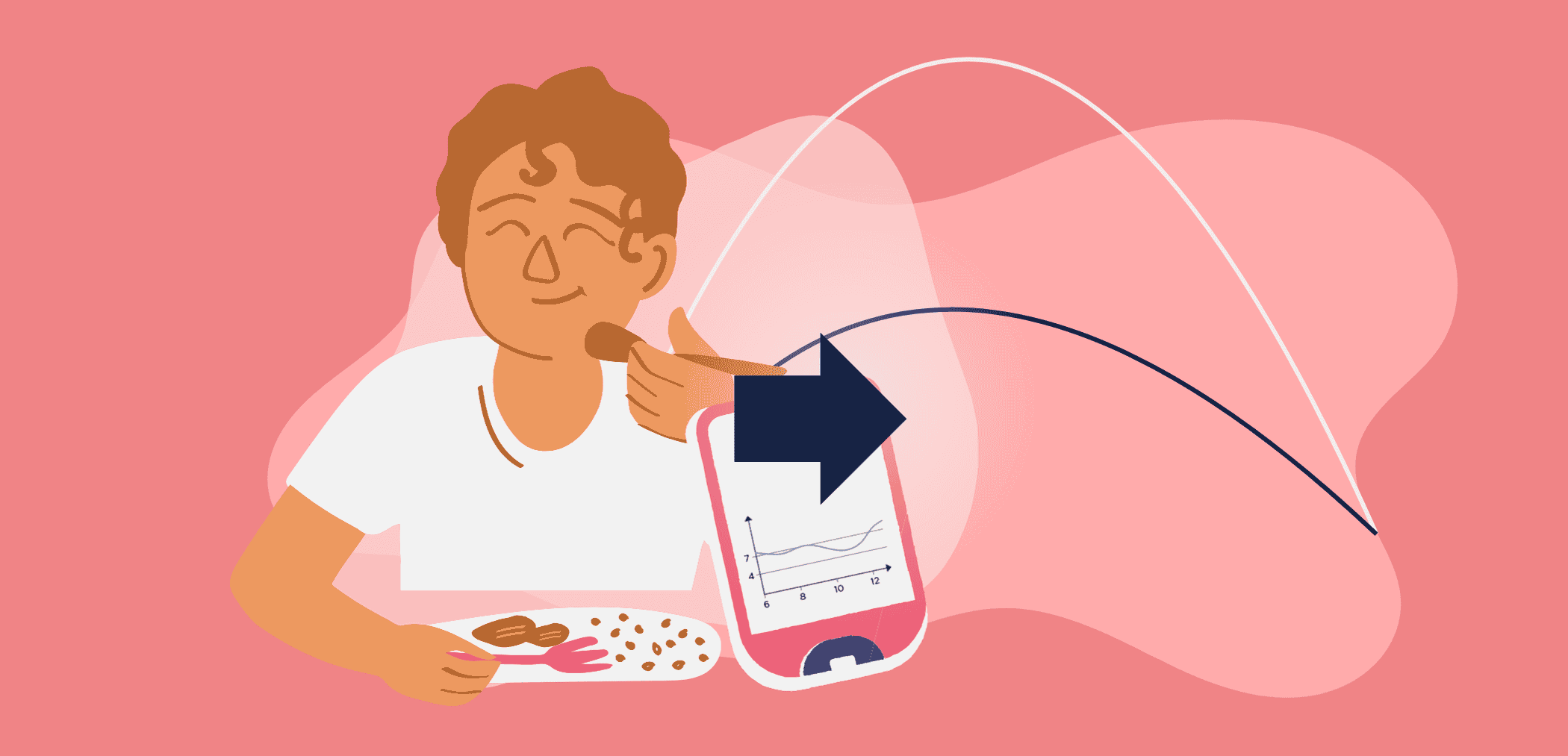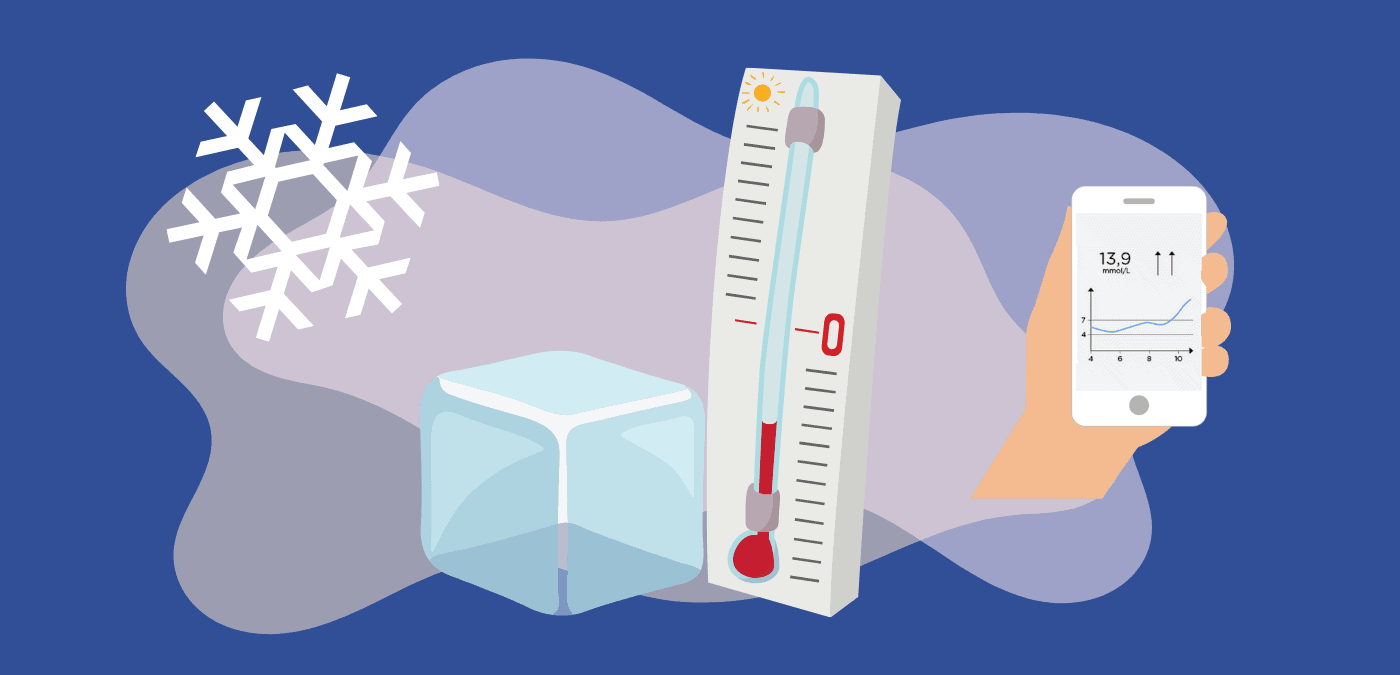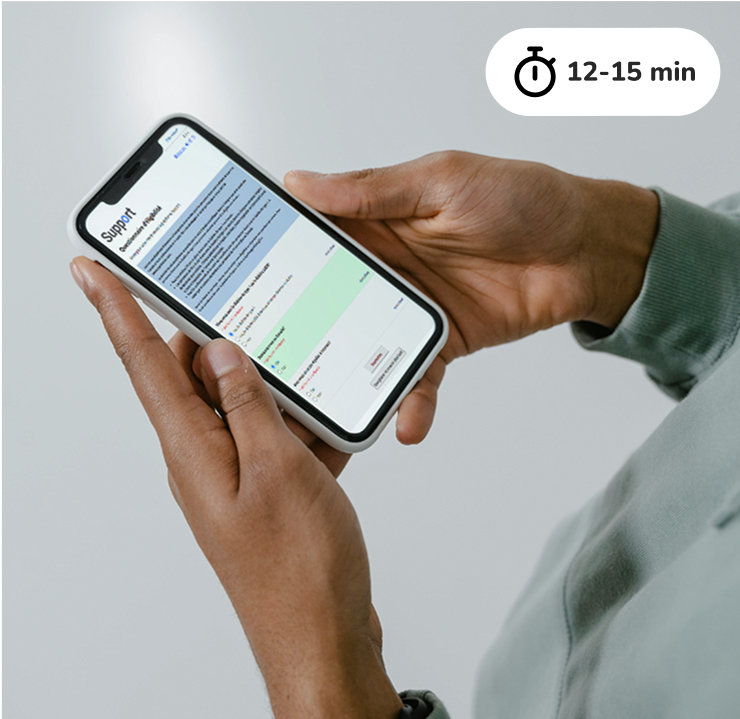Does pizza send your blood sugar all over the place? Does your favorite smoothie send it soaring? If you’re living with type 1 diabetes (T1D), managing blood sugar levels at mealtime can be complicated and daunting.
Fortunately, there are ways to minimize blood sugar variations after meals; here are a few strategies that may help.
Calculate carbohydrates as accurately as possible
The amount of carbohydrates you consume is the most impactful on your blood sugar levels following a meal. Still, there are a multitude of other factors that can cause hypoglycemia or hyperglycemia. That’s why you determine your rapid-acting insulin dose (or bolus) before each meal and snack based on the number of carbs on your plate. Studies show that accurate carb counting reduces blood sugar fluctuations following a meal.
Consider the impact of protein and fats
Your meals usually won’t be made up of carbohydrates only. Meals also include two nutrients that affect blood sugar levels: protein and fat. Indeed, protein (e.g., in meat, fish, eggs, dairy products, tofu, legumes) will have small but direct impact on blood sugar, raising it very slowly up to 4 to 12 hours after the meal. Fats (e.g. in meat, deli meats, fried foods, butter, oil and avocado) delay the absorption of carbohydrates and, consequently, raise blood sugar levels several hours after the meal. Consuming a large amount of fat during a meal will also impact the body’s ability to use insulin (insulin resistance).
So, when your meal is high in fat and/or protein (e.g., pepperoni and cheese pizza or steak and fries), it’s best to take this into account when calculating your insulin dose. Some studies suggest adding 25% of your calculated dose to your bolus to mitigate the impact of protein and fat. For instance, if your calculated dose is 10 units, you’d to add 25% of 10 units (2.5 units), for a total of 12.5 units.
Inject insulin at the right time
It is usually recommended to administer your insulin bolus before eating so that the insulin action better matches the rise in blood sugar. Bolusing 5 to 15 minutes (depending on your type of rapid insulin) before eating a balanced meal leads to a lower rise in blood sugar levels.
If you eat foods that are low in fibre and fat, but high in simple sugars (e.g., white bread toast with jam or a smoothie), you may want to bolus up to 45 minutes before your meal. This should ensure that insulin is already acting by the time you start eating, curbing the quick rise in blood sugar associated with simple sugars (CAUTION: don’t use this strategy if your blood sugar is low before the meal!).
Conversely, if you eat a meal high in fat and/or protein (e.g. pepperoni and cheese pizza), you may want to consider splitting your insulin dose in two: one to be given when you start eating, and the other when you’re finished eating.
Aim for a balanced diet
A balanced meal (as recommended by Canada’s Food Guide) makes blood sugar management easier, since the impact on practically matches the insulin action curve. As often as possible, you should aim for a well-balanced plate, i. e., with half fruits and vegetables, a quarter whole grains and a quarter protein.
When you’re dining out or having a special occasion meal, there are still ways to limit variations in blood sugar levels. For example, a slice of pepperoni and cheese pizza with a salad is less likely to send your blood sugar on a roller coaster ride. If you’re craving cookies, cakes, candy or chocolate, eat them as part of a meal rather than on their own. The same goes for alcoholic beverages. Alcohol can lower blood sugar levels some time after consumption, so carbohydrates from a meal or snack can act as a safety cushion.
Other strategies
There are other simple ways to reduce the impact of your meals on your blood sugar levels:
- Opt for fresh fruit rather than dried fruit, compotes or juice. They curb more the rise in blood sugar.
- Choose whole grains. They are less refined and therefore higher in fibre. Examples: whole-grain bread, brown rice.
- As for pasta, al dente is best. The longer pasta is cooked, the faster it will impact blood sugar levels.
- Make water your go-to drink.
- Go for a short walk after your meal.
- Depending on the type of meal, if you feel like it, try and change up the order in which you eat the different types of food on your plate. Start with protein and/or fibre, and end with carbohydrates, especially if you haven’t bolused well enough in advance. Some studies have found that this strategy can limit blood sugar spikes after meals.
Feel free to experiment!
Unfortunately, there is no magic formula for limiting blood sugar variations after meals. Each person is different, and many factors influence blood sugar levels. So, don’t hesitate to monitor your blood sugar for up to five hours after a meal, and experiment with different menus, different food combinations, as well as any of the strategies mentioned above, to find YOUR own way to minimize mealtime blood sugar spikes or dips.
For more content and information about T1D and its management, please connect to Support online self-learning platform!
References:
- Support Platform. Category: Diet. Course: Carbohydrate basics.
- Support Platform. Category: Diet. Course: All about carb counting.
- Support Platform. Category: Diet. Course: All about insulin-to-carb ratios.
- Support Platform. Category: Diet. Course: Strategies for different meals.
- Shukla, A.P. et al. (2015). Food Order Has a Significant Impact on Postprandial Glucose and Insulin Levels. Diabetes Care 38(7): e98-e99. https://diabetesjournals.org/care/article/38/7/e98/30914/Food-Order-Has-a-Significant-Impact-on
Written by: Nathalie Kinnard, scientific writer and research assistant
Reviewed by:
- Amélie Roy-Fleming, P. Dt., ÉAD, M.Sc.
- Catherine Leroux, P.Dt., M.Sc.
- Anne-Sophie Brazeau, P.Dt., Ph.D.
- Marie-Christine Payette, Claude Laforest, Michel Dostie, Amélie Eloundou, Jacques Pelletier et Domitille Dervaux, patient partners of the BETTER project.




